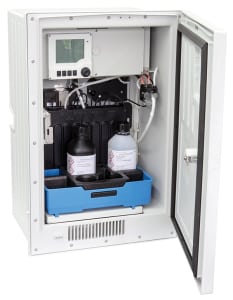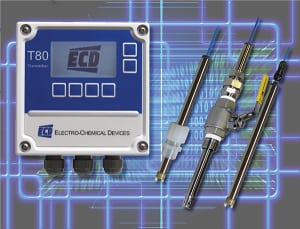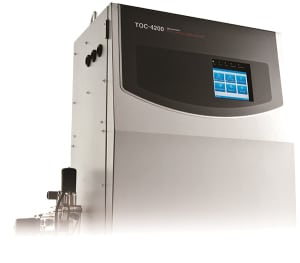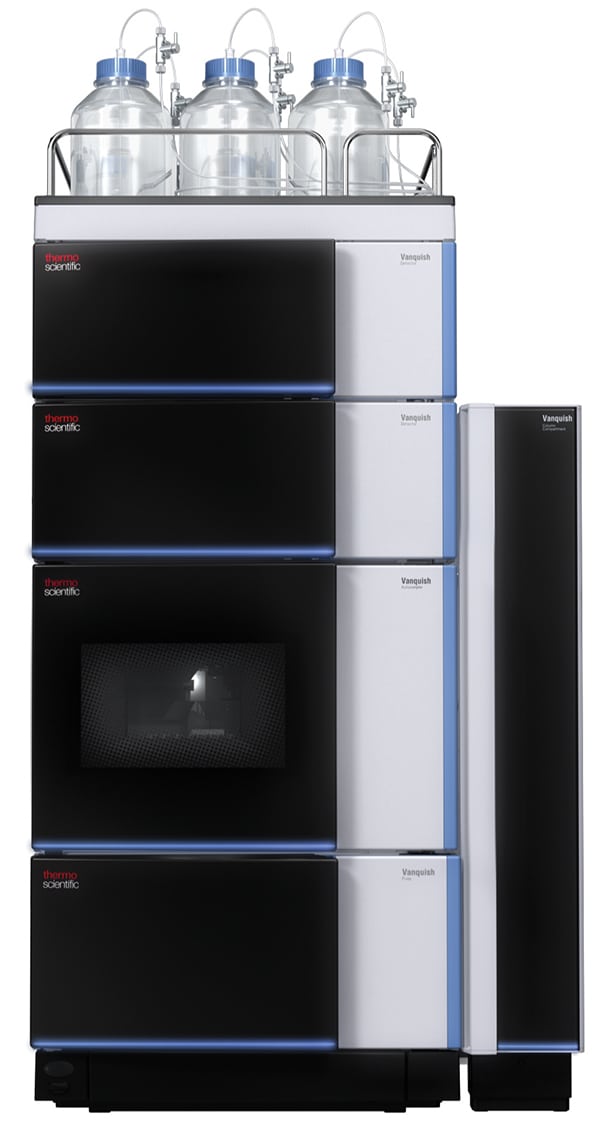Digitalized, cost-effective instruments allow more measurement points and provide usable data
Although the basic methods of measuring pH, oxidation-reduction potential (ORP), conductivity, dissolved oxygen (DO), chlorine, turbidity and similar parameters haven’t changed, digitalized instrumentation for liquid analysis is becoming smarter, easier to use, more cost effective and adaptable to demanding applications. But, what do these improvements bring to the table for chemical processors? More measurement points can be added, allowing processors to make the shift from simply monitoring a process to quickly collecting actionable data that can be used to reduce and simplify maintenance and optimize the plant.
“Processors have always used sensor measurements for liquid analysis, but it’s how they currently are using data from these measurements that’s changing,” says Tracy Doane, national product manager, Analytical, with Endress+Hauser (E+H; Greenwood, Ind.; www.us.endress.com). “We are seeing more measurement points installed into critical parts of their processes because it provides knowledge about how the process is operating, which often leads to economic improvements to the business. At the end of the day, processors don’t care about a pH sensor, they care about improving the metrics of the organization, so they are using the data from these instruments to look for actions they can take to help lower costs, improve product purity, remove bottlenecks, find higher throughput and provide increased safety to plant, personnel and the environment.”
Doane continues: “This is now possible because we are able to digitize today’s more intelligent sensors and transfer collected information to where it can be accessed and used to help optimize processes.”
Eric Kim, international sales manager/applications engineer, with Electro-Chemical Devices (ECD; Anaheim, Calif.; www.ecdanalytical.com), adds that the ease of use and cost effectiveness of today’s analytical instruments are also boosting the ability to use measurements in this fashion. “In the past, liquid analytics was primarily done using grab samples, which had to be taken to a lab. This was time-consuming, expensive and slow,” he says. However, processors want results immediately so they know promptly whether to make adjustments that help optimize the process. “For this reason, there’s a trend to make the instruments not only smarter, but also more user-friendly and cost-effective, allowing them to take more measurements throughout the plant and get faster, more reliable results,” Kim explains.
Cherlyn Marlow, product manager for process liquid analyzers with Yokogawa Corp. of America (Newnan, Ga.; www.yokogawa.com/us), adds that these trends not only allow more widespread use of liquid analysis for process optimization, but also new applications for the instruments. “Chemical plants are continually adding more online measurements, but I have also seen many new applications,” she says. “When it comes to the liquid analyzer world, there are so many opportunities for process improvements. We have also seen companies looking internally to reduce their waste and recycle back into the plants or use their waste for another process. But to do any of these, they usually need to add more analyzer instruments.”
The digital revolution
In the past, processors ran sensors to failure, explains E+H’s Doane. “So while they had to measure pH and other parameters, it was not always a trustworthy measurement if a sensor was close to failure.” However, she says, the digital age has allowed users to start trusting and relying on measurements so they can be used for validation and verification, right on through to the production phase, where these measurements can be applied to control and tweak the process. “There’s been a huge paradigm shift from monitoring liquid measurements to actually controlling processes with these measurements. This is due to the ability to digitalize information from the sensor and pass it to the transmitter and then out into the DCS [distributed control system] to the higher levels of the organization where business decisions can be made based upon the available data. Thanks to digitalization, liquid analytics can be part of Industry 4.0 and big-data analytics.”
To facilitate this capability, E+H applies Memosens technology to liquid analysis instruments (Figure 1), which converts the measured value to a digital signal and transfers it to the transmitter. Memosens offers signal alarms if there is a transmission disruption to provide safe data transfer and increased availability of the measuring point. The digital sensors store calibration, sensor and process data, allowing calibration and regeneration under laboratory conditions for increased sensor life and minimal process downtime. Meshing with Memosens sensors is Liquiline transmitter technology, which serves as a platform for all liquid analysis applications. Memosens sensors can be quickly connected to the Liquiline transmitters, which automatically recognize the sensor type and read the information stored in the sensor. The transmitter also offers integration into process control systems via 4–20 mA, HART, Profibus DP, Modbus and Ethernet. In addition, the company’s Heartbeat Technology, offered with its liquid analysis devices, organizes standardized diagnostic messages of what needs to be done in order to maintain the instrument, enabling predictive maintenance and delivering evidence for operational reliability and process safety.

Figure 1. The CA80PH is an analyzer that offers online orthophosphate measurement for precise dosing of precipitants in wastewater treatment
Endress+Hauser
“The information available from these sensors, thanks to the digitalization, is a lot more important than just the pH, ORP or other measurements,” explains Steven Smith, senior product manager, Analytical, with E+H. “We are now able to pull those data and get a wealth of information regarding the device itself, send it to the control system, incorporate it into the user’s process information and deliver an added value to process engineers,” he says. For example, looking at the parameters for the pH measurement might show users a deviation over time and, because they can view reports that show the sensor has been functioning properly, they know the deviation is likely due to the process itself, not the sensor.
Similarly, Yokogawa offers its Sensation package solution, encompassing Data Acquisition and Smart digital Sencom sensors (such as the Sencom pH/ORP platform). In many facilities, liquid analyzers are connected to chart recorders and paper logbooks that are being used and maintained for registration, reporting and traceability. With Sensation, the capabilities of some of Yokogawa’s products, such as Smart datalogger, SmartDac+ and Smart digital Sencom sensors, are combined to create a solution that will improve factory efficiency and profitability by improving the traceability and functionality and simplifying maintenance and calibration, notes Yokogawa’s Marlow.
Sencom technology allows sensors to transmit and receive data when connected to the device. Digital or Smart sensors maintain the specific measurement and calibration data on an integrated chip. The data can be exchanged between the sensor and either a process measurement device or a laboratory PC via data management software. Using historical measurement, calibration and diagnostic data from the sensor, the data-management system provides the tools to predict maintenance and calibration frequency and estimate sensor life.
Cost-effective, easier-to-use
In addition to the diagnostic capabilities and ability to digitally transfer collected sensor information, cost effectiveness, ease-of-use and flexibility are facilitating increased use of liquid analytics.
“In the days of analog signals, the transmitter display showed only the measurement,” notes ECD’s Kim. “But now as the costs are coming down and digital transmitters are able to provide more data, including predictive maintenance and calibration information, users are getting much more bang for their buck, allowing them not only to add more measurement points, but to obtain more useful information at a lower cost.”
Adding to the cost effectiveness is the flexibility of modern sensors and transmitters. For example, ECD offers a universal line of instruments for liquid analysis. T80 Universal Transmitters (Figure 2) are designed for the continuous measurement of pH, ORP, DO, turbidity and more. The transmitter digitally communicates with an S80 Intelligent Sensor, automatically configuring the transmitter’s menus and display screens to the measured parameter. “For example, you can plug an S80 conductivity sensor into a T80 pH transmitter and it will automatically reconfigure into a conductivity transmitter,” says Kim. “There is no longer a need to inventory multiple instrument types.”

Figure 2. T80 Universal Transmitters are designed for the continuous measurement of pH, ORP, DO, turbidity and more. The transmitter digitally communicates with an S80 Intelligent Sensor, automatically configuring the transmitter’s menus and display screens to the measured parameter
Electro-Chemical Devices
S80 Intelligent Sensors facilitate two-way communication with the T80 Transmitters. The type of sensor, identity and serial number are stored in the sensor’s memory along with calibration registers. The sensors are calibrated at the factory, so they are ready to use when connected to a T80 transmitter. The S80 sensors also offer replaceable electrode cartridges. “This means that, if needed, only the electrode can be replaced and not the complete sensor, saving the cost of having to replace the whole sensor. Also, if I buy a pH electrode for my S80, the transmitter will recognize it as a pH sensor, but if I later want to measure ORP, I can remove the pH electrode, replace it with an ORP electrode and the T80 transmitter will recognize it as an ORP sensor,” he says. “Because users only have to purchase an electrode instead of replacing the whole sensor, it saves money.”
ABB (Lewisburg, W.Va.; www.abb.com) is also building cost effectiveness and ease-of-use into instruments via a modular approach, says Nikodem Siwek, local continuous water analyzer product manager. “The main highlight of today’s digital instruments is the ability to store the characteristics of the sensor on the sensor itself. This allows a mix-and-match approach and simplifies tasks, such as calibration, because you can essentially take the sensors out of the process, bring them to the lab and perform the calibrations all at once, then put them back in the installation easier and faster than before,” he explains.
ABB is preparing to launch a new range of transmitters and pH/ORP sensors later this year that will offer this modularity. “Think of it as a box-built type design,” he says. “You will have a shell of a transmitter with precalibrated modules that can be mixed and matched. This allows users to stock the transmitter and electrodes and then mix and match them depending upon the requirements at the time, improving flexibility of stocking, lowering overall costs and simplifying use.”
Evolving to meet demands
Often in the chemical industry there are demanding applications — either those with extreme process conditions or those that require swifter sampling techniques or niche instrumentation — and instrument providers are devising innovative solutions for these situations, as well.
For example, Jason Dalebroux, director of product management for Rosemount liquid and combustion analysis with Emerson (Shakopee, Minn.; www.emerson.com), says, “Any time you have an extreme application — those with high temperatures, high pressures or dirty conditions — better measurement methods are required. There are several solutions available on the market today to address more difficult process conditions and prolong sensor life.”
He explains that most manufacturers offer re-buildable sensors so users can cost-effectively change the electrolytes and recharge pH sensors used in higher temperatures, as well as sensors built with more resistant materials so sensors operate longer without clogging in high suspended-solids environments. “We are also seeing new types of instruments, such as optical-based technologies, for measuring concentrations and substances within a liquid,” says Dalebroux.
The Rosemount Analytical RDO optical dissolved oxygen sensor and analyzer, for instance, is more resistant to fouling than polarographic sensors, an important advantage in wastewater where coating is a common problem. Less sensitivity to fouling means less need for cleaning and reduced operating costs. “The big advantage here is that you’re using optical measurement to extend the performance life of a sensor in very dirty applications,” says Ryan Bowlds, Emerson’s global product manager for liquid analysis. “Previous technologies would have led to plugging of the sensor if used in wastewater treatment or processing within the plant if high levels of suspended solids were present. Optical measurements are more resistant.”
While many of today’s technologies are in-situ, sampling is still necessary in many applications. However, instrument providers realize the necessity of speeding up the measurement process and providing flexibility to afford efficiency of process.
For example, regarding total organic carbon (TOC) analyzers, it is becoming increasingly important for process control to obtain fast, continuous information on the organic pollution levels of waters, says Mark Janeczko, chemicals and energy marking manager with Shimadzu Scientific Instruments (Columbia, Md.; www.ssi.shimadzu.com). “TOC process analysis offers this possibility because the sample is fed continuously to the instrument for subsequent measurement. The instrument sends the analytical data to the control room, which can react promptly to any possible process changes.”
An approach that includes various modules, kits and options provides added speed and flexibility to this measurement. Shimadzu’s online TOC analyzer, the TOC-4200 (Figure 3), offers a selection of sampling techniques from a single-stream sampler to a sample exchanger for six different sample streams without a homogenizer for water containing particles.

Figure 3. The online TOC analyzer, the TOC-4200 offers a selection of sampling techniques from a single-stream sampler to a sample exchanger for six different sample streams without a homogenizer for water containing particles Shimadzu
And when it comes to high-pressure liquid chromatography (HPLC), used in niche applications, the instrumentation here is also gaining speed thanks to the introduction of ultra-high-pressure liquid chromatography (UHPLC) techniques that are able to handle multiple flow paths simultaneously in order to speed up results, says Carsten Paul, HPLC product marketing manager with Thermo Fisher Scientific (Germering, Germany; www.thermofisher.com). The Thermo Scientific Vanquish Duo UHPLC system (Figure 4)uses a separate second flow path in one integrated system, which saves time and cost per sample without compromising performance or ease of use. By having two flow paths in one instrument, users are able to double throughput or deepen sample knowledge because they can run the same method on both flow paths or two different methods simultaneously on one instrument, improving lab productivity, sample knowledge, bench space usage and overall return on investment, says Paul.

Figure 4. The Vanquish Duo UHPLC system uses a separate second flow path in one integrated system. By having two flow paths in one instrument, users can double throughput or deepen sample knowledge by running the same method on both flow paths or two different methods simultaneously on one instrument Thermo Fisher Scientific
Liquid analytical devices are being used more now than in the past due to the advancement, reliability and cost effectiveness of the instruments, says Daniel Siddiqui, chemical industry manager with E+H. “Vendors and manufacturers are being asked to embed intelligence in these devices so they may be used for process optimization and to monitor the health of process and equipment,” he says. “They are breaking down barriers on the analytical side by including analytics in automation for control and process safety monitoring.”